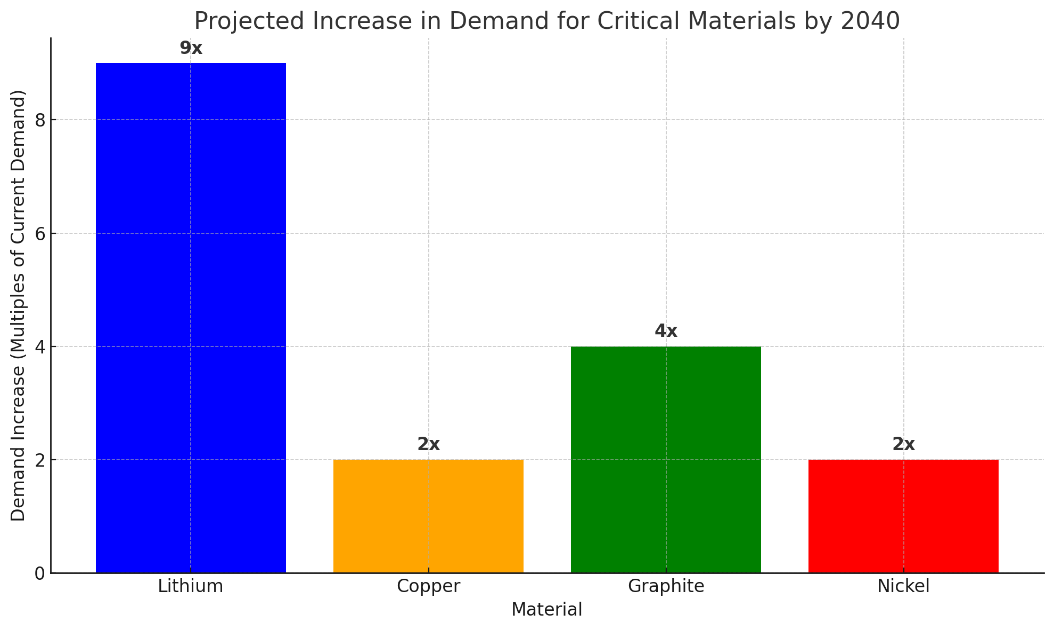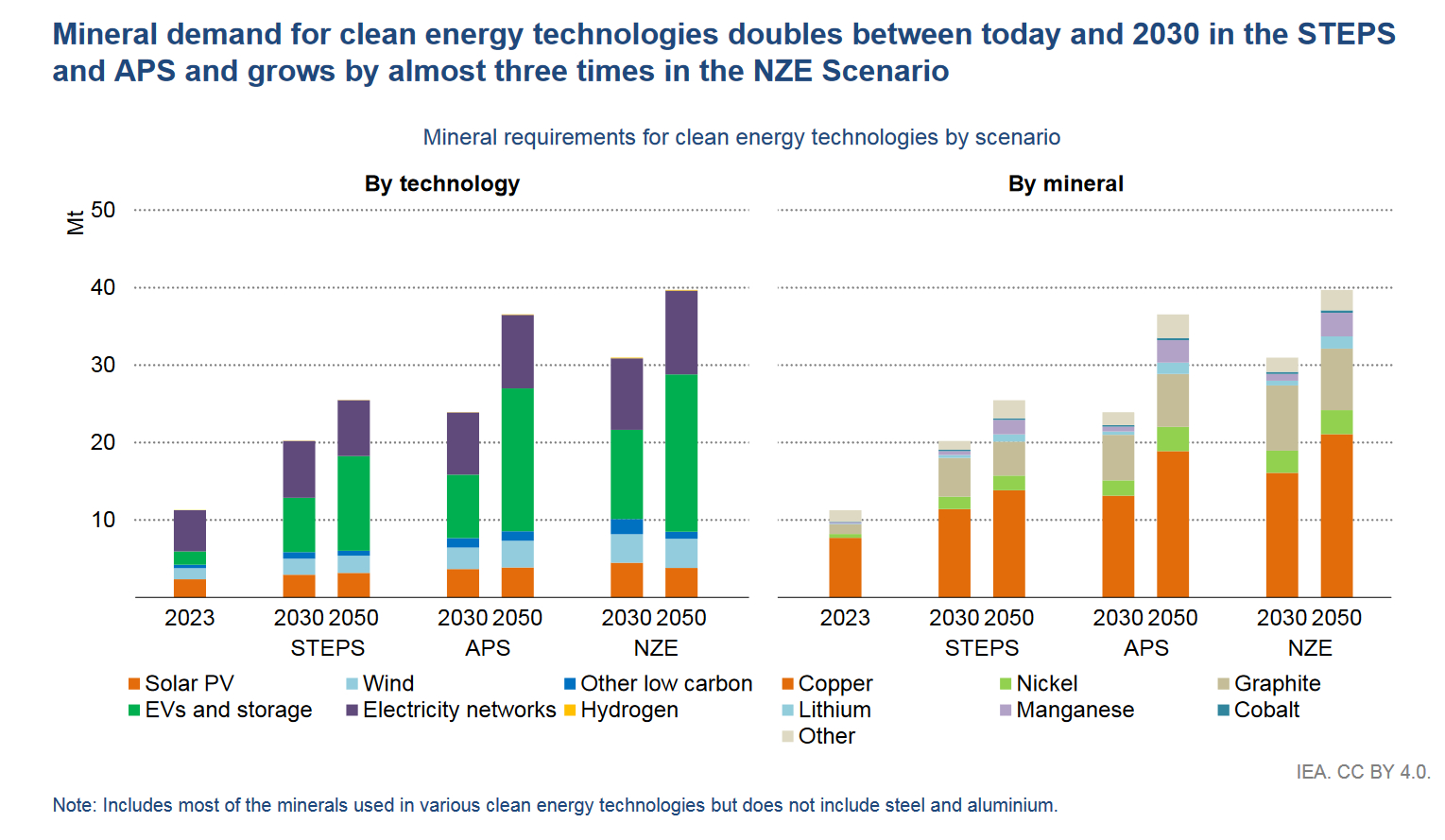
Future Demand for Raw Materials in Emerging Technologies – A Global Perspective
The transition to clean energy technologies is driving unprecedented demand for critical raw materials essential for manufacturing batteries, electric vehicles (EVs), wind turbines, solar panels, and other clean energy solutions. Insights from the International Energy Agency's (IEA) "Global Critical Minerals Outlook 2024" and the International Resource Panel (IRP)’s “Global Resources Outlook 2024”, provide a comprehensive understanding of this evolving landscape.
Demand Projections
Both the IEA and IRP reports emphasise the significant growth in demand for raw materials. Figure 1 displays the key projections.
- Lithium demand is expected to increase nearly ninefold by 2040, driven by the rise in EV battery production.
- Copper: With demand nearly doubling by 2040, the metal is essential for electrical conductivity.
- Graphite and Nickel: Both materials are crucial for battery anodes and cathodes, with demand for graphite nearly quadrupling and nickel doubling by 2040. (IEA, 2024)

Figure 2 illustrates the projected mineral demand required for various clean energy technologies under three scenarios: the Stated Policies Scenario (STEPS), the Announced Pledges Scenario (APS), and the Net Zero Emissions by 2050 Scenario (NZE). By 2030, the mineral demand is expected to double in both STEPS and APS, and nearly triple in the NZE Scenario. These projections highlight the significant increase in raw material requirements to meet global clean energy goals, underscoring the urgency for sustainable and secure mineral supply chains.

The future demand for critical raw materials presents both opportunities and challenges. Ensuring sustainable and diversified supply chains is crucial for supporting the global clean energy transition. The IEA and IRP emphasise international cooperation and innovative policies to address these challenges effectively. The EU's involvement with these organisations underscores its commitment to a sustainable and secure energy future.
About IEA and IRP
International Energy Agency (IEA)
The IEA is an autonomous intergovernmental organization that works to ensure reliable, affordable, and clean energy. Its "Global Critical Minerals Outlook 2024" provides critical analysis on the demand and supply of essential minerals, highlighting challenges and trends. The EU collaborates closely with the IEA, utilizing its insights to shape energy policy and transition strategies.
International Resource Panel (IRP)
The IRP, established by the United Nations Environment Programme (UNEP), focuses on sustainable resource management. It provides scientific assessments and policy recommendations on the lifecycle and environmental impacts of critical raw materials. The EU leverages IRP’s research to promote resource efficiency and sustainability.
Other international institutions involved in forecasting and analysing future demand for various materials:
- World Bank - Examines future demand for minerals essential for sustainable development and the transition to a low-carbon economy.
- United Nations Environment Programme (UNEP) - Studies the future demand for materials in the context of sustainable resource management and environmental impact.
- OECD (Organisation for Economic Co-operation and Development) - Analyses trends and forecasts future demand for materials and provides policy advice.
- US Geological Survey (USGS) - Monitors and provides data on the future demand and availability of global mineral resources.
- International Council on Mining and Metals (ICMM) - Focuses on sustainable development and studies the future supply and demand of raw materials in the mining and metals industry.
- World Resource Forum - Discusses future demand for materials and promotes innovative and sustainable practices in materials management.
